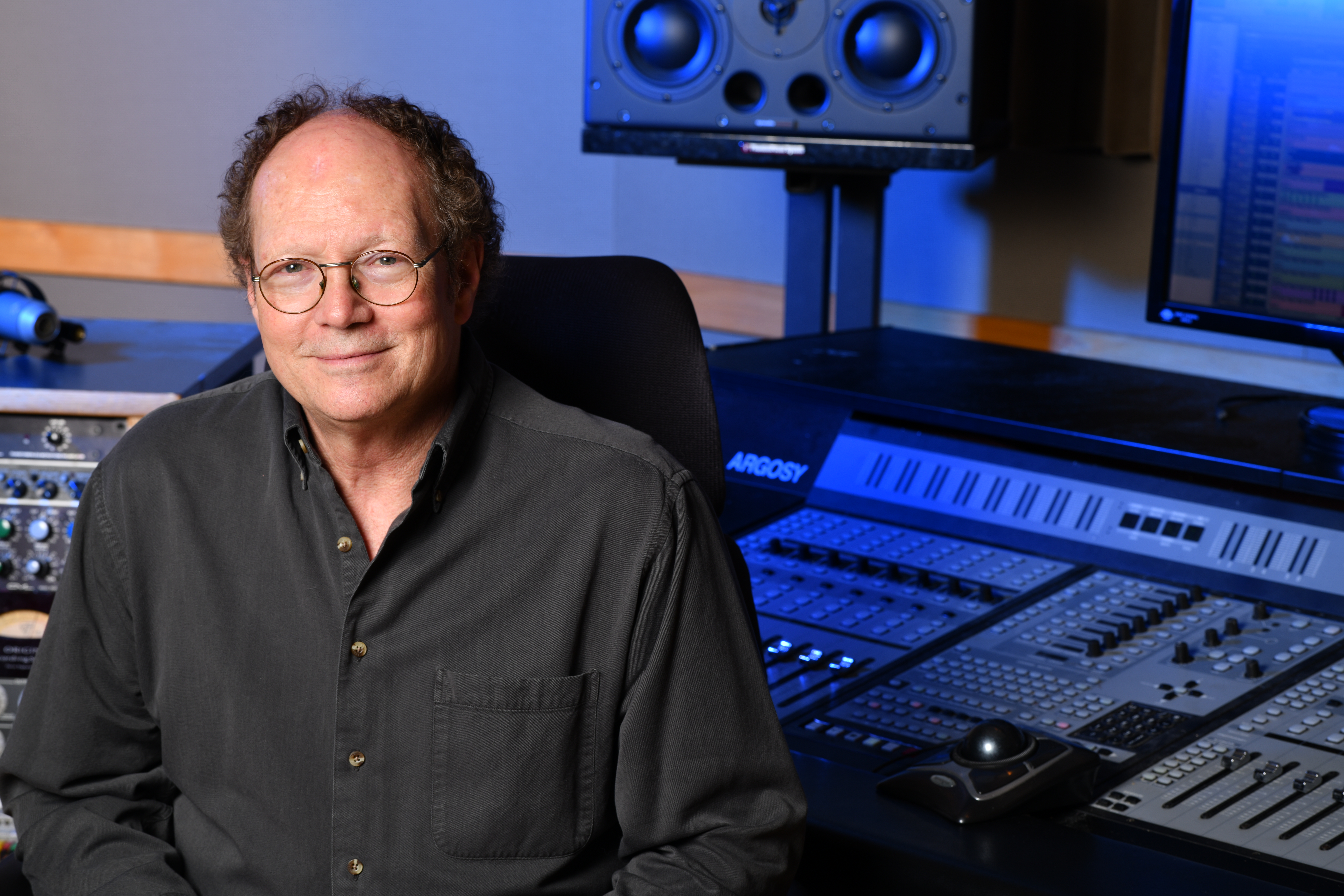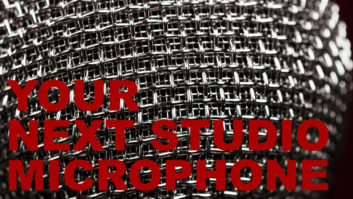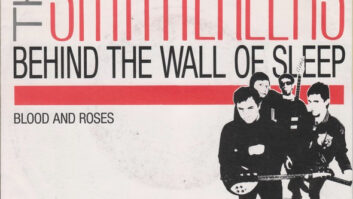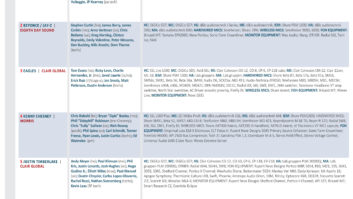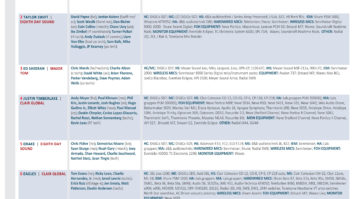Although the mic was designed as an homage to its famed ancestry, I’m glad AKG chose not to call the new C-451 B a reissue microphone. The C-451 B is an entire rethinking of the classic C-451 E/CK-1 capsule design, and it sounds better than the original — the result of improved specs, modern componentry and updated construction techniques.
A LITTLE HISTORY
Made from the late ’60s through the mid-’80s, the original AKG C-451 C Condenser Modular System (CMS Series) was a best-selling “chameleon” of a mic. It was designed to be adaptable to nearly any purpose; it could be outfitted with any of a whole system of modular components — such as screw-on capsule attenuator pads, extension tubes and swivels — that greatly increased its versatility. The original mic used the N-46E dual-AC power supply that supplied 12-volt phantom power and had a two-position, bass roll-off filter switch. As I found out by accident in my distant past as a second engineer, the mic would accept up to 52-volt phantom powering without smoking. The original, externally biased CK-1 capsule had an extremely low mass, making the mic insensitive to handling noise and a favorite for handheld radio and TV use.
For AKG, the C-451 C (the “C” suffix indicates a DIN connector; the “E” designates a standard XLR output) was the first solid-state condenser mic using the then-new Field Effect Transistor (FET) instead of a tube. It replaced both the great-sounding AKG/Norelco C 60 pencil condenser, which used an AC701K tube, and the C-61 with its miniature RCA 7586 Nuvistor tube. With the C-451 EB came a switchable -12dB/octave highpass filter with flat/75/150Hz positions. Much later, the C-452 EB arrived, which is the same but runs on 48-volt phantom only. Sadly, for economic reasons, AKG discontinued the CMS Series and the CK-1 capsule in 1994.
WHAT’S NEW?
AKG’s R&D department gathered 12 of what was considered the creme de la creme of vintage CK-1 capsules from around the world to measure and determine their original acoustic properties. The new C-451 B capsule uses a backplate electret, self-polarized design with a three-micron, gold-sputtered Mylar diaphragm suspended just 35 microns from the printed-circuit backplane. The new capsule has the same cardioid polar pattern that the CK-1 has.
Once the CK-1 was reinvented, AKG completely updated the mic’s body with Surface Mount Technology (SMT) components on a miniature printed-circuit board and gold-plated XLR and capsule connectors. The old mics were laboriously hand-soldered and prone to intermittents — a well-known fact among live sound engineers who shun their use on the road. One new design criteria for the new C-451 E is passing AKG’s dreaded drop test, which simulates a 6-foot fall from drum overhead mic stands. This test is repeated six times on each of a group of mics that are randomly selected from the production line.
To make the mic even more rugged, the new capsule is permanently attached to the C-451 B preamp body. A one-piece mic is a welcome feature of the C-451 B, especially to any engineer who, in the middle of a session in a dimly lit studio, has struggled to attach the CK-1 onto the old C-451/452 bodies properly, without cross-threading those very fine, Swiss watch-like threads! However, I do miss the C-451/452’s capsule swivel adapters, which were great for sneaking around drum kits…
One thing I don’t miss is the need to insert screw-on capsule mic attenuator pads like the ones the old C-451/452 EB mics had. Right on the C-451 B body, near the bass roll-off switch, are -10 and -20dB capsule attenuation switches. Also, both the pad and HP filter switches are improved over the original switches. The new switches are easy-to-see red, and they seem to be better made and easier to change with the tip of a ball-point pen. The old EB’s roll-off switches often broke, stuck or disappeared inside the mic body, making it impossible to know (by looking at them) how they were set. Cosmetically, the C-451 B looks similar to the old mics, with sandblasted, all-metal, nickel-plated housing, and engraved wording and symbols. Often, on late ’80s-vintage C-451 E mics, the decals (without engraving) wore off.
THE SOUND!
In my A/B tests, I found the C-451 B’s new transformerless output improved LF reproduction, especially at higher SPLs. I also noticed more output level than the C-451 E, C-451 EB, C-452 E and C-452 EB. Without going into explicit detail, all the mics sounded great, but overall, the C-451 B is simply more pleasant-sounding than the others. It’s warmer than the C-452s, with a better bass roll-off sound, and the bottom end is cleaner than the original. I like the LF sound of the original C-451s, too — just as I like using vintage Neve modules for the sonics of those transformers. The C-451 B still uses the FET design, so everything you’d use the old mics on sounds the same — only better.
You can buy the C-451 B in two ways. As a single mic, it comes with a clip/stand adapter and windscreen in a zippered bag.
For this review, I received a stereo pair of two computer-matched microphones. They come with two clips, two windscreens and the H 50 stereo-mounting bar — all in a foam-lined carrying case. “Matched” is an understatement! All new C-451 Bs come with individually measured frequency response (20 to 20k Hz, ±1.5 dB) curve plots. My two mics’ curves are identical; in fact, I can place the two tissue-paper charts (shown in the figure) on top of each other and see no differences. AKG uses a computer database comprising all of the frequency response results from a production run of mics. The computer comes up with the best matching pair: Both frequency response and sensitivity measurements must be within ±0.5 dB of each other.
IN THE STUDIO
The most popular studio applications for the C-451/452 have always been drum kits, overheads and acoustic guitar. Small-diaphragm mics excel at accurately reproducing the percussive transients of these instruments. For drums, I always liked the C-451 E on hi-hat and/or snares. Both jobs usually require the attenuator pad, and it is so nice not to have to take the mic down to screw in the -20dB pad when the -10dB pad wasn’t enough! The C-451 B, with an increased SPL rating of 135 dB (no pad), would have been fine without a pad on the quieter songs. Even without EQ, both snare drums and hi-hats sound crisp, sharp and “open.” The cardioid pickup pattern is not too tight, which provides plenty of ambience for a close-miked instrument, while I can hear more drummer subtleties such as grace notes and stick drags.
The H 50 stereo bar is just the ticket for X/Y or close-spaced cardioid miking of percussion instruments like congas or marimba. In live sound use, I like eliminating one mic stand in a usually crowded percussion-miking setup.
Acoustic guitar recording is exactly the same as with the old mics, except the C-451 B produces tighter, cleaner lows. I also had fewer problems when my guitar player unexpectedly went from quiet finger-picking to full strumming — the mic and recording chain didn’t instantly distort. I like the presence of miking close on guitars, but proximity can be a problem. On a Gibson jumbo-body guitar, I put the mic about six inches over the soundhole, aimed toward the bridge, and I used the 150Hz roll-off. Sometimes I used the 75Hz position and rolled off with an equalizer when I needed a song/production/arrangement-specific LF contour. The C-451 B’s high-frequency lift is pleasing for acoustic guitar recording — much better than winding on a lot of EQ.
The AKG C-451 B reinforces my fond memories of using the venerable C-451 E with the same but improved sound, and without the old, impractical quirks. The C-451 B retails at $549, or $1,250 for a matched stereo pair.
Thanks to Tom and Nate Murphy for letting me raid their fine microphone cabinet and use their new SSL 9000 J console at Track Record, their North Hollywood studio. Also, thanks to Dan and Eric at LAFX Studios here in NoHo and to engineer/producer Alan Parsons for all their help.
AKG Acoustics, 914 Airport Center Drive, Nashville, TN 37217; 615/620-3800; fax 615/620-3875; www.akgusa.com.
Barry Rudolph is an L.A.-based recording engineer. Visit his Web site atwww.barryrudolph.com.

